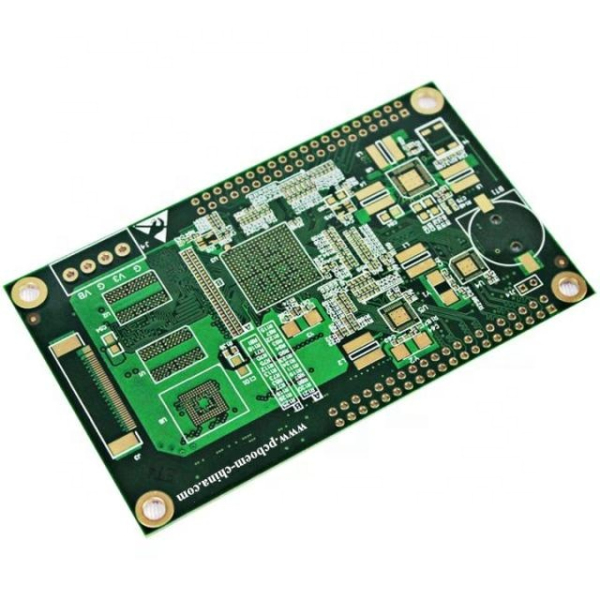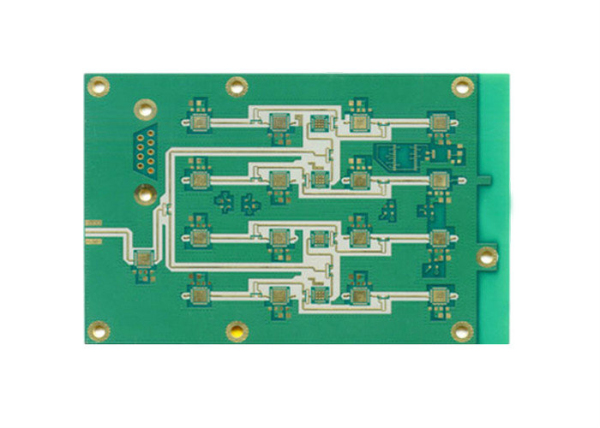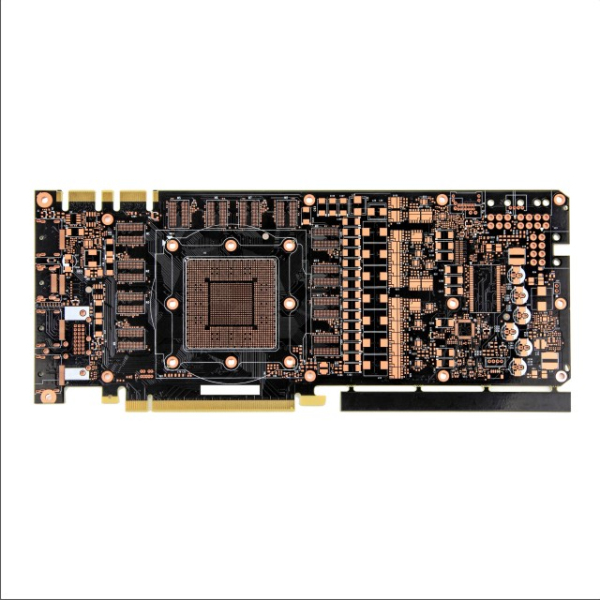What is RF board design?
In recent years, due to the demand and growth of Bluetooth devices, wireless local area network (WLAN) devices, and mobile phones, the industry has increasingly paid attention to RF circuit design techniques. From the past to the present, RF circuit board design, like electromagnetic interference (EMI), has always been the most difficult part for engineers to control, even a nightmare. If you want to design successfully once, you must plan carefully in advance and pay attention to details to be effective.
Radio frequency (RF) circuit board design is often described as a kind of "black art" because there are still many uncertainties in theory. But this is only a partial overarching point of view, there are still many rules that can be followed in the design of RF circuit boards. However, in actual design, the really practical trick is how to compromise these laws when they cannot be implemented due to various restrictions. Important RF design topics include: impedance and impedance matching, insulating layer materials and laminates, wavelength and harmonics... etc. This article will focus on various issues related to the design of RF circuit boards.

Types of micro vias
Circuits of different properties on the circuit board must be separated, but they must be connected under the best conditions without electromagnetic interference, which requires the use of microvias. Generally, the diameter of micro vias is 0.05 mm to 0.20 mm, and these vias are generally classified into three types, namely, blind vias, bury vias, and through vias. Blind via hole PCB is located on the top and bottom surfaces of the printed circuit board and has a certain depth. It is used to connect the surface line and the underlying inner line. The depth of the hole usually does not exceed a certain ratio (aperture). Buried PCB refers to the connection hole located in the inner layer of the printed circuit board, which does not extend to the surface of the circuit board. The above two types of holes are located in the inner layer of the circuit board, and are completed by a through-hole forming process before lamination, and several inner layers may be overlapped during the formation of the via. The third type is called through-hole (communication PCB). This kind of hole passes through the entire circuit board and can be used for internal interconnection or as an adhesive positioning hole for PCB assembly.
Use partitioning techniques
When designing the RF circuit board, the high-power RF amplifier (HPA) and the low-noise amplifier (LNA) should be separated as much as possible. Simply put, keep the high-power RF transmitter circuit away from the low-noise receiver circuit. If there is a lot of space on the PCB, this can be done easily. But usually when there are many PCB assembly components, the PCB space becomes very small, so this is difficult to achieve. You can put them on both sides of the PCB board, or let them work alternately instead of working at the same time. High-power circuits sometimes include RF buffers and voltage-controlled oscillators (VCO).
Design partitions can be divided into physical partitioning and electrical partitioning. Physical partitioning mainly involves issues such as component layout, orientation, and shielding; electrical partitioning can continue to be divided into power distribution, RF wiring, sensitive circuits and signals, and grounding.
Physical partition
Component layout is the key to achieving an excellent RF design. The most effective technique is to first fix the components on the RF path and adjust their position to minimize the length of the RF path. And keep the RF input far away from the RF output, and as far away as possible from high-power circuits and low-noise circuits.
The most effective circuit board stacking method is to arrange the main ground on the second layer below the surface, and route the RF lines on the surface as much as possible. Minimizing the size of the vias on the RF path can not only reduce the path inductance, but also reduce the virtual solder joints on the main ground and reduce the chance of RF energy leaking to
Other areas of the laminate.
In physical space, linear circuits like multi-stage amplifiers are usually sufficient to isolate multiple RF zones from each other, but duplexers, mixers, and intermediate frequency amplifiers always have multiple RF/IF signals that interfere with each other. Therefore, care must be taken to minimize this effect. The RF and IF traces should be crossed as much as possible, and a grounding area should be placed between them as much as possible. The correct RF path is very important to the performance of the entire PCB board, which is why the component layout usually takes up most of the time in the mobile phone PCB board design.
Metal shield
Sometimes, it is impossible to keep enough separation between multiple circuit blocks. In this case, it is necessary to consider using a metal shield to shield the RF energy in the RF area. However, metal shields also have side effects, such as: PCBA Manufacturing costs and Mixed Assembly costs are both high.
It is difficult to ensure high precision when manufacturing metal shields with irregular shapes. Rectangular or square metal shields restrict the layout of components; metal shields are not conducive to component replacement and fault displacement; metal shields must Solder on the ground plane, and must maintain a proper distance from the components, so it takes up valuable PCB board space.
It is very important to ensure the integrity of the metal shield as much as possible. Therefore, the digital signal line entering the metal shield should go as far as possible to the inner layer, and it is best to set the next layer of the signal circuit layer as the ground layer. The RF signal line can be routed out from the small gap at the bottom of the metal shield and the wiring layer at the ground gap, but the gap should be surrounded by a large ground area as much as possible. The ground on different signal layers can use multiple vias. connected together.
Despite the above shortcomings, metal shields are still very effective and are often the only solution to isolate critical circuits.
Power decoupling circuit
In addition, a proper and effective chip power decoupling circuit is also very important. Many RF chips that integrate linear circuits are very sensitive to power noise. Usually, each chip needs to use up to four capacitors and an isolation inductor to filter out all power noise.
The minimum capacitance value usually depends on the resonant frequency of the capacitor itself and the pin inductance, and the value of C4 is selected accordingly. The values of C3 and C2 are relatively large due to their own pin inductance, so the RF decoupling effect is worse, but they are more suitable for filtering lower frequency noise signals. The RF decoupling is done by the inductor L1, which prevents the RF signal from being coupled to the chip from the power line. Because all traces are a potential antenna that can both receive and transmit RF signals, it is necessary to isolate RF signals from key circuits and components.
The physical location of these decoupling components is usually also critical. The layout principles of these important components are: C4 should be as close as possible to the IC pin and grounded, C3 must be the closest to C4, C2 must be the closest to C3, and the connection trace between the IC pin and C4 should be as short as possible. The ground terminal of each component (especially C4) should usually be connected to the ground pin of the chip through the first ground layer under the board. The via that connects the component to the ground plane should be as close as possible to the component pad on the PCB. It is best to use a blind hole made on the pad to minimize the inductance of the connection line. The inductance L1 should be close to C1.
An integrated circuit or amplifier often has an open collector output, so a pullup inductor is needed to provide a high impedance RF load and a low impedance DC power supply. The same principle applies to this The power supply side of the inductor is decoupled. Some chips require multiple power supplies to work, so two or three sets of capacitors and inductors may be required to decouple them separately. If there is not enough space around the chip, the decoupling effect may be poor.
Especially need to pay special attention to: the inductances are rarely close together in parallel, because this will form an air-core
Transformer and induce interference signals with each other, so the distance between them must be at least the height of one of them, or at a right angle. Arrange to minimize mutual inductance.
Electrical partition
Electrical partitioning is in principle the same as physical partitioning, but it also contains some other factors. Some parts of modern mobile phones use different working voltages and are controlled by software to extend battery life. This means that mobile phones need to have multiple power sources, and this creates more isolation problems. The power supply is usually introduced by a connector, and is immediately subjected to decoupling processing to filter out any noise from the outside of the circuit board, and then passes through a set of switches or linear regulators for power distribution.
Contact us if you need more details on High Frequency Signal Integrity Pcb. We are ready to answer your questions on packaging, logistics, certification or any other aspects about High Frequency Signal Pcb、RF Circuit Board. If these products fail to match your need, please contact us and we would like to provide relevant information.
Product Categories : High Frequency Board > High Frequency Pcb


